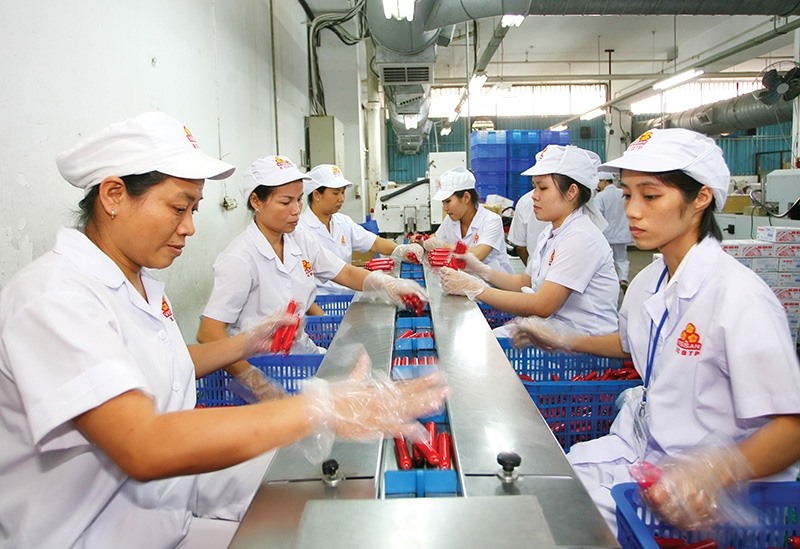 Economy
Economy

Senior experts and economists gathered for a seminar held in the capital city yesterday to assess Việt Nam’s economy development and its prospects in 2021and announced the Vietnam Annual Economic Review 2020.

|
Labour productivity rates in Vietnam increased 6.2 per cent on-year in 2019.– Photo vir
HÀ NỘI – Senior experts and economists gathered for a seminar held in the capital city yesterday to assess Việt Nam’s economic development and its prospects in 2021 as well as announcing the Vietnam Annual Economic Review 2020.
Participants said in the complicated situation of the COVID-19 pandemic, with serious impacts on global economies, Việt Nam's quick and appropriate responses helped successfully contain the pandemic and ensure positive economic growth.
Việt Nam was the only country in ASEAN and one of few countries in the world, to achieve positive growth
But they said policies on financial and investment management were still inadequate.
Assoc. Prof. Dr. Phạm Thế Anh, co-editor of the Vietnam Annual Economic Review 2020 said the economy always faced pressure on inflation or assets bubbles which occurred when the price of assets such as stocks, bonds, and real estate rose at a rapid pace without underlying fundamentals.
Anh said if these risks occurred, they would not only increase the gap between the rich and the poor but also have a great influence on manufacturing sectors.
According to the review, Việt Nam last year achieved a gross domestic product (GDP) growth of 2.91 per cent, an impressive figure despite the impacts of the pandemic. However, the monetary policy still showed problems that need to be clarified.
Money supply and credit growth remained stable and corporate bond issuance surged in 2020, bringing the corporate bond market size to about 13 per cent of GDP compared to 10.85 per cent in 2019. And the country’s economic growth was less than two-fifths compared to the average economic growth in 2018 and 2019.
Economists said that despite these factors, finance was not made readily available for the manufacturing sectors, and instead used for other investment channels including car imports, real estate, stocks and gold.
The review said last year financial and banking sectors enjoyed positive growth after the health care service, information and communication sectors. Meanwhile, manufacturing, electricity, water, entertainment, logistics, catering, and accommodation services hit hard times.
This showed that the money supply and credit expansion only brought benefits for financial and banking sectors and not for manufacturing or other services, said experts.
They said despite a stable consumer price index, assets bubbles and bad debts brought high risks for the economy as the monetary policy loosened.
Real estate prices also increased unexpectedly from last year, especially in cities and provinces with infrastructure projects are being developed.
They warned that loosening monetary and credit policies should be very carefully considered both in terms of scale and duration, especially when the world economy was recovering.
It also argues that Việt Nam’s ambition to become a high-economy will be determined not only by its capacity to exit successfully from the COVID-19 crisis but also how it will manage finance policy. The highest priority is to support those who lost their jobs due to COVID-19.
Finance support for affected businesses after the COVID-19 pandemic should be made such as exemption of interest rates for bank loans or land lease fees.
Savings in public spending should also be considered as one of the important measures as the effects of the COVID-19 pandemic on the global economy were still largely unknown and there was a large increase in uncertainty about the economy in the future. -- VNS




